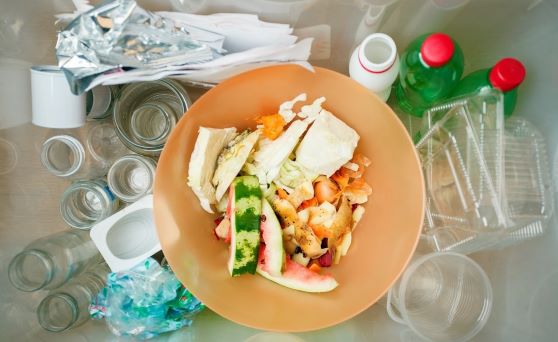HOUSEHOLD HAZARDOUS WASTE DROP-OFF
2020 Household Hazardous Waste (HHW) Drop-Off Program
Saturday, October 24 from 9 a.m. to 2 p.m.
Norwood (specific location provided after registration)
LIMITED TIME SLOTS AVAILABLE
Hamilton County Residents only! – Businesses, Churches, Non-Profits Prohibited
No charge
Rain or Shine
Place household hazardous waste in the rear of your vehicle and remove other items to help workers quickly identify the household hazardous waste to be removed. At the event, stay in your car at all times.
Acceptable Materials: Antifreeze, Batteries, Fertilizers, Fuels (gasoline, diesel fuel, camp stove fuel, lighter fluid), Glues (tar, resins, adhesives, sealants, epoxies, caulk, spackle, joint compounds), Cleaners, Mercury-Containing Devices (thermostats, thermometers, barometers, manometers), Corrosive Liquids (muriatic acid, wood strippers, floor cleaners, oven cleaners, ammonia, drain cleaners, cesspool cleaners), Flammable Liquids (solvents, petroleum distillate cleaners/polishes, stains, rubbing alcohol, rust preventatives, wood preservatives), Organic Peroxides, Misc. Toxics (photo chemicals, old chemistry sets), Oil Filters, Oil-based Paint, Paint Thinners (mineral spirits, lacquer thinner, methyl ethyl ketone), Pesticides/Herbicides, Pool Chemicals, Propane Tanks, Used Oil (motor oil, transmission fluid, brake fluid, Mercury Salts (mercurochrome, old chemistry sets), Straight Fluorescent Lamps, Compact Fluorescent Lamps, LED, Halogen, Incandescent, Quartz, Circular and U-Shaped Lamps/Bulbs
Unacceptable Materials: LATEX PAINT, Unknown gas cylinders, Large quantities of unknown materials, Radioactive waste (including smoke detectors), Unstable waste and reactive materials requiring stabilization, Fireworks, Explosives, Gun Powder, Flares and Ammunition, Controlled substances regulated by the Drug Enforcement Administration, Biohazardous and Infectious wastes, Any item prohibited from transportation per US DOT, Yard Trimmings, Tires, Garbage
**If you are not able to come on Saturday due to religious reasons, please call 513-946-7766.**
You may sign up to receive email notifications about future HHW programs by following this link and selecting Household Hazardous Waste Collection Updates.
Not sure what to do with your materials? Visit our Recycling and Reuse Outlets webpage.
Unsure of what to do with your latex paint? Click here for more information on proper disposal.
http://www.hamiltoncountyrecycles.org/residents/recycling_and_reuse_outlets/household_hazardous_waste_drop-_off
So, You’ve Audited Your Waste, Now What? | Earth 911
In part one, Conducting a Home Waste Audit, you learned to audit your household waste for a week. Now it’s time to analyze the waste and make changes. In my waste audit example, I categorized 150 items for disposal. Of those items, I could put 77 items in the recycling bin and drop off an additional three items for recycling. While this ratio is better than average (the U.S. recycling rate is 35% and my household is over 50%), we could take a few additional steps to divert even more waste from the landfill.
1. Precycling
If you aren’t already precycling, it’s a huge missed opportunity. Precycling involves shopping with waste output in mind. When you shop, seek out products that are packaged in material that you can recycle curbside, bring your own shopping bags, and buy in bulk to limit packaging in the first place.
In my household’s example waste audit, there were 16 candy wrappers. I could make the effort to buy candy in paper boxes (like movie theater candy), or visit a zero-waste grocery store and bring my own containers to carry the bulk candy I purchase.
On the other hand, my waste audit results also included 27 plastic bags for food packaging. These bags are more difficult to eliminate since most of them contained frozen food and were designed to reduce food waste. They should not go in curbside recycling (because they can damage sorting machinery) or grocery store recycling bins (because they are made of multiple plastic resins). In this case, precycling would involve changing my purchasing habits to buy less food with this sort of packaging. Think ahead and say “No” to unneeded food packaging.
2. Composting at Home
Another great way to divert material from landfills is by composting. With a little guidance, you can compost yard waste, most food scraps, and soiled paper like paper towels.
My audit produced 11 fruit peels/vegetable cores, eight pieces of soiled paper, and two paper drink cups. All of these items could be composted if I had a home composting system. Since I don’t cook meat or dairy items at home, I wouldn’t have to worry about eggshells or bones that can take much longer to decompose.
Unfortunately, I’m not a gardener, so compost is an unlikely solution for my house. I could put fruit and vegetable remains down the garbage disposal in limited quantities. Also, a number of states have pickup services that allow people who don’t compost to divert their organic waste from landfills.
3. Cut Down on Mail
In my waste audit, there were 22 pieces of mixed paper and one piece of newsprint, all of which came in the mail. While this may seem high, I’ve taken several steps to keep the number low.
Like me, you may have already signed up for paperless billing and opted out of phone book delivery. But have you used the Direct Marketing Association’s opt-out for commercial mail?
Even after doing all of that, you’re still going to get unwanted mail. This is significant now because mixed paper is one of the biggest casualties of the China ban on recyclable imports. This is yet another potential reason to start composting at home.
Use your audit to build a list of your options, think about your personal priorities — such as my lack of need for compost because I don’t garden — and decide what to do with each category of recyclable material. It will help build habits that reduce your home’s waste output.
Did you miss part one of this series? Read The 411 on Conducting a Home Waste Audit.
Editor’s note: This article was originally published on September 19, 2018


